I'm a bit late to this question, but maybe this will help someone searching for a similar answer. There are two major things you need to watch out for when using multiple oauth servers on a load balancer:
As @chris-h alluded to in his answer, you need to ensure that the information backing an access token issued by any of the oauth servers can be read (and trusted) by any of the other oauth servers. You can use a JDBC token store as he suggested, but this has the disadvantage that if Server A has to validate an access token issued by Server B, it always has to hit the database to do so.
A better solution (IMO) is to use JWT access tokens, where all the information needed to validate the token is encrypted within it. So long as all oauth servers use the same encryption key, they can read the data in each other's access tokens and trust that the data is valid since it is encrypted. The advantage is there are no database calls needed to validate an access token. The disadvantage is that there's no easy way to invalidate an access token once it's been issued. If you ever wondered why refresh tokens are needed when you could just increase the expire time of the access tokens themselves, this is the biggest reason.
The second thing to be aware of is that the Spring oauth implementation uses sessions to keep track of where the user is an the authentication process. If you aren't careful, you could wind up in an "endless loop" scenario. Suppose you have two oauth servers--Server A and Server B:
- The user goes to a web page or service which requires authentication, so gets redirected to "foo.com/oauth/authorize". The load balancer sends this request to Server A.
- Since Server A doesn't have any session information which proves the user is already authenticated, it redirects the user to the login page at foo.com/oauth/login. The redirect goes back through the load balancer, and since the load balancer is working in a "round-robin" fashion, this time it sends the request to Server B.
- The user logs in successfully, so session information is written to keep track of this. This session information is only known to Server B.
- Since the login was successful, the user gets redirected back to "foo.com/oauth/authorize" to continue the authentication process. Once again the redirect goes back through the load balancer. Since the load balancer is working in a "round-robin" fashion, this time it sends the request to Server A. But Server A doesn't know about the successful login that happened on Server B. Go back to step 2!
Probably the best (current) solution to this problem is to ensure that your load balancer supports "sticky sessions"--that is, once it sends a particular user to Server A or Server B, it always sends that user to the same server for a while.
A better solution might be for oauth implementations to not use sessions at all. Instead, use encrypted data passed as a parameter to /oauth/* that denotes where you are in the login process. Similar to how JWT tokens work, the information can be trusted by all servers if they all share the encryption key.

